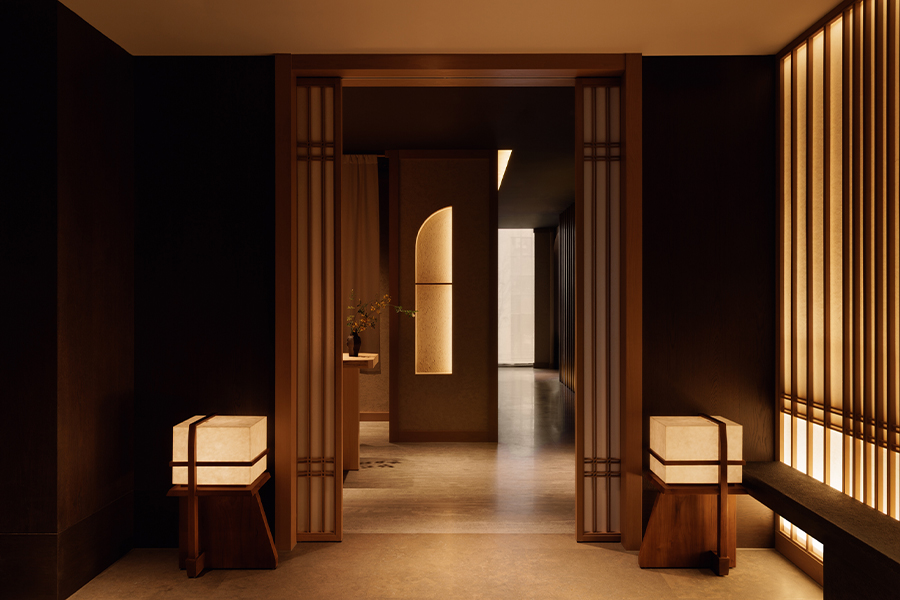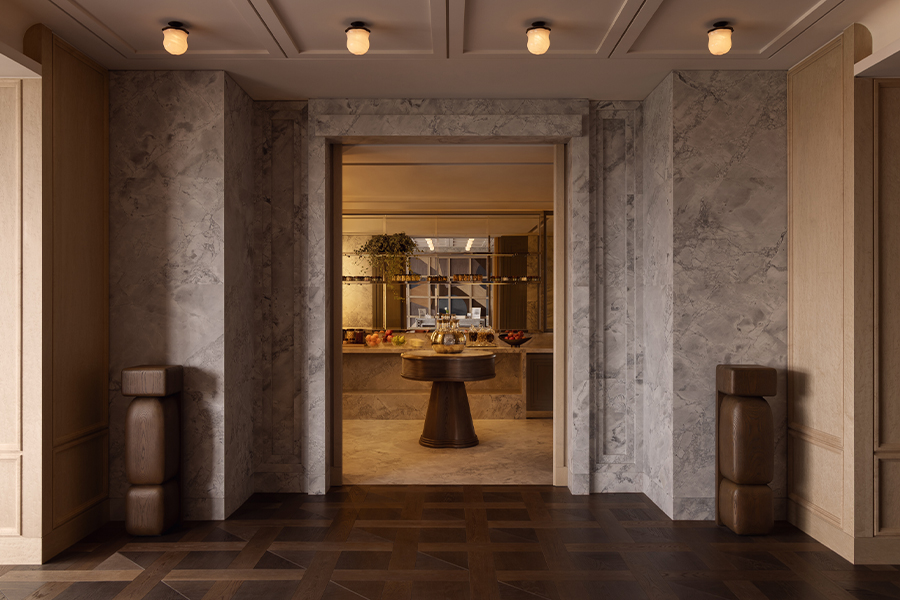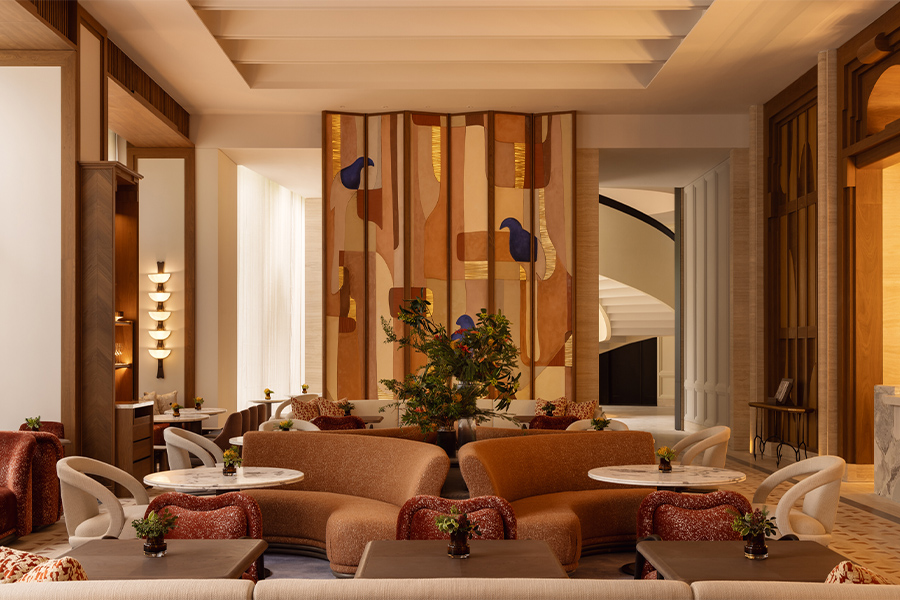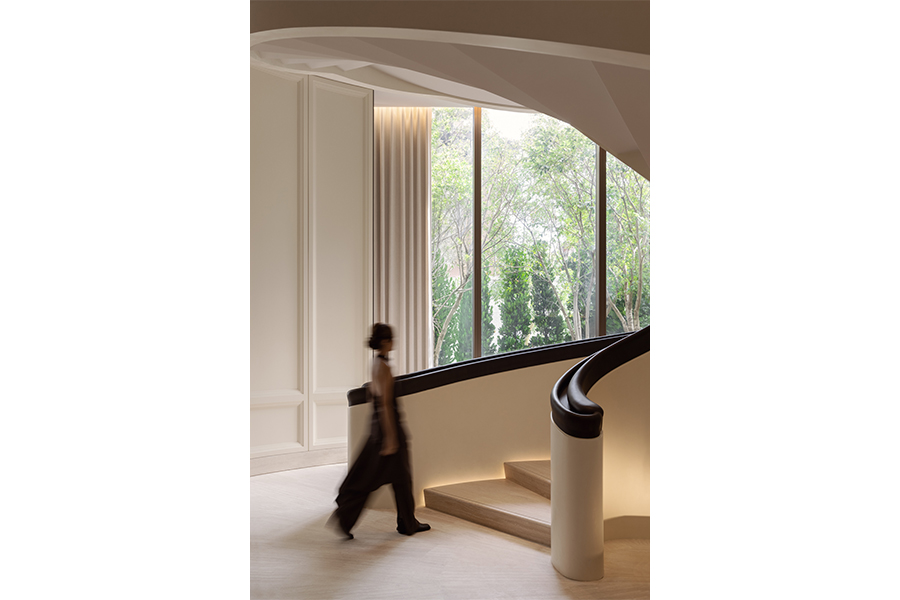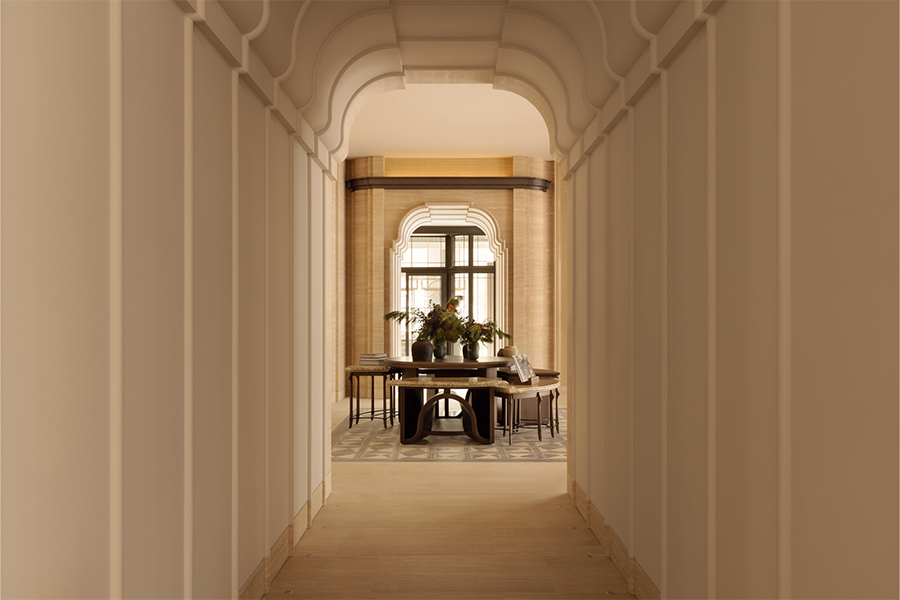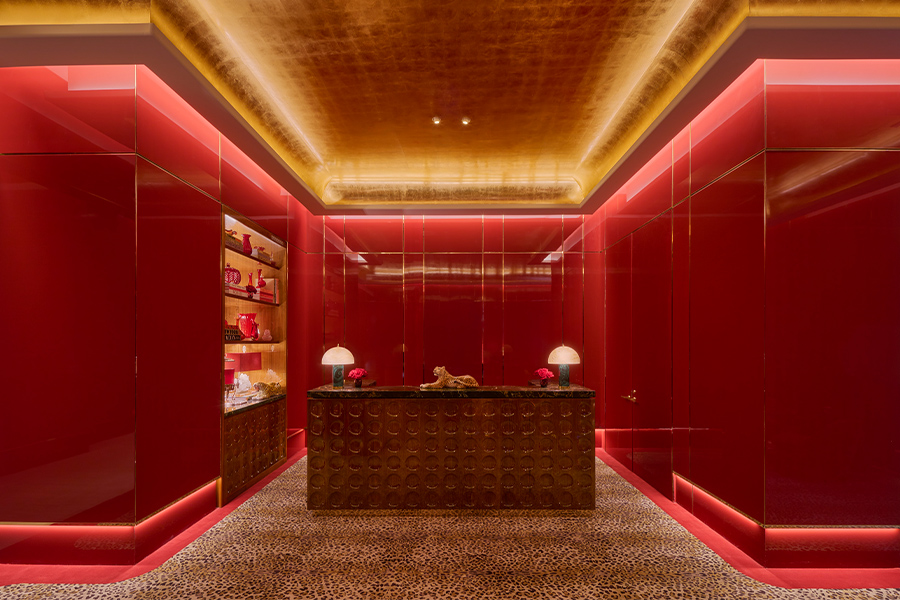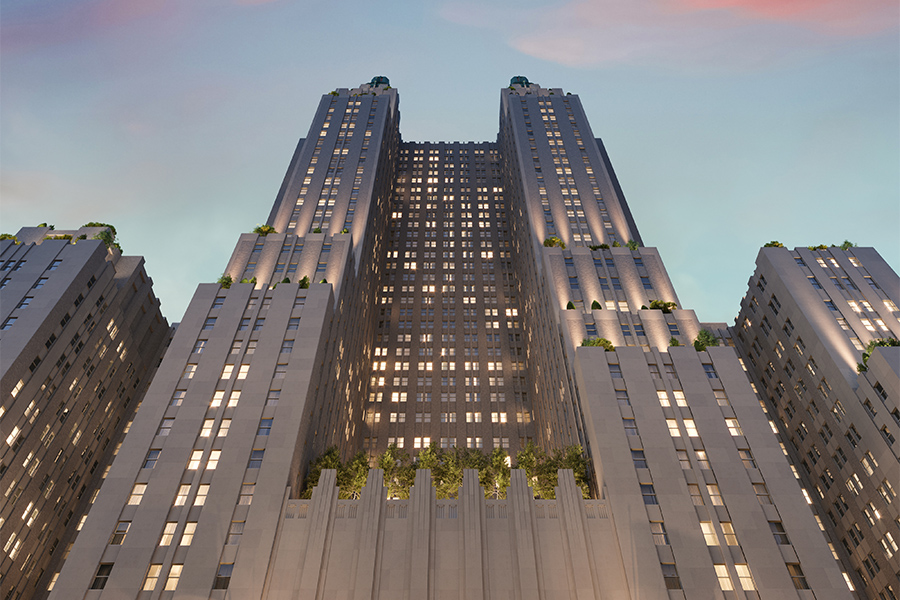When conceiving Taipei’s first new luxury hotel in over a decade, Hong Kong-based designer André Fu was most concerned about the property fitting in with the city’s unique pace. “There is a subtle calmness in the air of the city that I find mesmerizing,” Fu explains. “The essence of quiet luxury,” as he puts it, thus became the thesis of Capella Taipei.
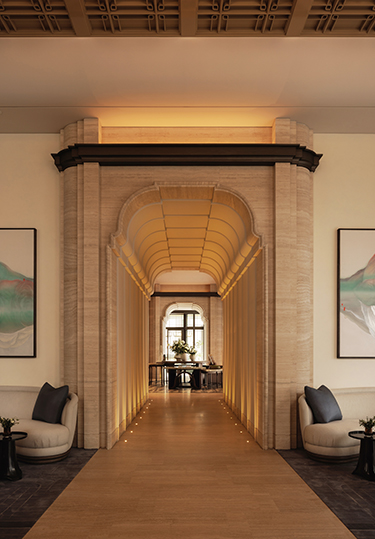
A pair of large canvas works by Jasper Huang hang in the entryway, showcasing a majestic mountain landscape on silk
Evocative of a modern mansion, the property welcomes guests with a cobblestone driveway that leads to a tranquil courtyard filled with sculpted greenery. It conjures what Fu describes as, an “intricate dialogue between bespoke luxury and cultural legacy, with a vision to carve the space into a series of intimate pockets—each articulated with design accents yet linked with a thread of shared aesthetics.”
From there, large bronze doors act as the grand entrance, opening into Plume, a buzzy lobby lounge that invites intimate conversations. This sanctuary-like arrival moment exists under the watchful eyes of Taiwan’s famous blue magpies, here depicted in a handpainted mural from French artist Elsa Jeandedieu set against a palette of deep terracotta and camel sand. “There is a conscious sense of layering in the arrival journey, and as each layer unfolds, guests find themselves fully immersed into the hotel,” Fu points out.
Further in, the artistic journey continues. Local artist Lee Chen-Lin created a vast tapestry that depicts Taipei’s lush cityscape. “Chen-Lin’s intricate weaving captures the ethereal beauty of Taiwan’s misty peaks and verdant valleys,” Fu adds. Meanwhile, in the lobby, a sculpture called Quiet Dynamics by artist Joel Escalona—featuring 10 stacked hardwood blocks that trace the curve of a calla lily—sets the tone at the base of the fluid grand spiral staircase that transports guests to the public spaces and the accommodations.
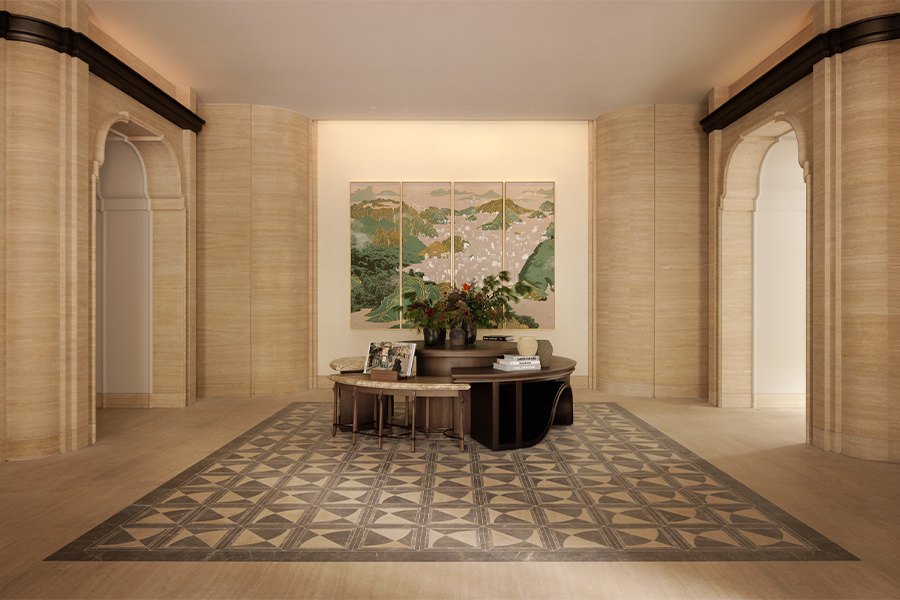
The reception is anchored by Lee Chen-Lin’s textile artwork that depicts the geography of the Taipei Basin
The 86 guestrooms, eight of which are suites with private terraces and pools, start on the hotel’s 14th floor, and come with floor-to-ceiling windows for unparalleled views of Taipei and its nearby mountains. Crowning the building is the penthouse, which boasts a private gym and wraparound city views.
In addition to Plume and patisserie Atelier Plume, the property is home to three more F&B options, including Mizue, influenced by traditional Japanese ryokans; Ember 28, centered on the ancient art of fire-cooking; and signature Chinese restaurant, Rong Ju, where the main dining room creates a sense of drama with a pitched ceiling clad in terracotta red tiles and a handcrafted marquetry wall adorned with peony and intertwining foliage motifs.
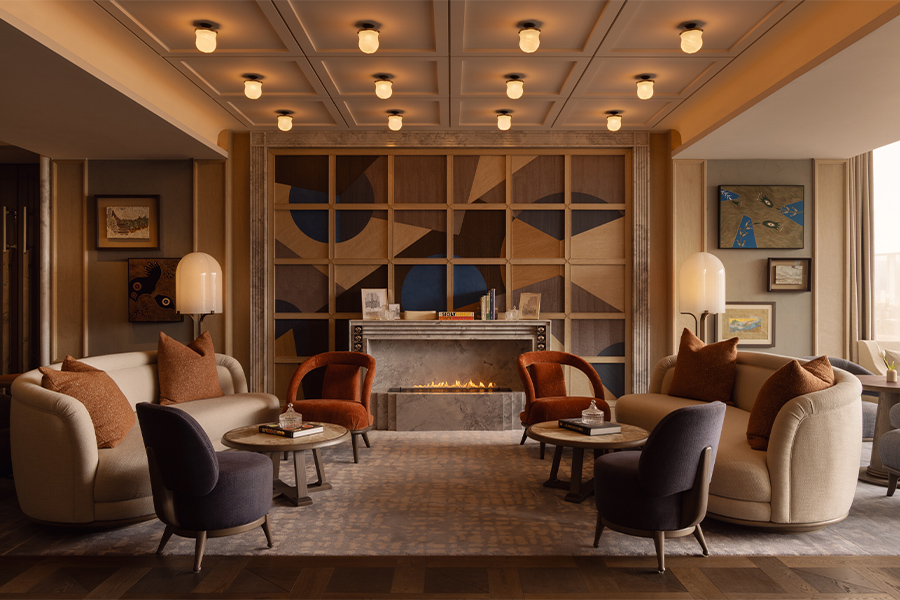
Flanked by seating, the living room boasts a selection of artwork that evokes a sense of discovery
The spa adds to the property’s dramatic flair with barrel- and cross- vaulted ceilings that harmonize with the precise geometric proportions of the entrance. “My goal was to craft a wellness sanctuary imbued with the spirit of profound stillness,” Fu points out. “This architectural expression, commonly found in churches and monasteries, creates a celestial feeling.”
The hotel’s journey culminates at the vast pool terrace. Here, a white bougainvillea hedge spans 125 feet to create a living tapestry punctuated by cabanas in a rich auburn orange canvas.
“Rather than honor Taipei’s history,” he says, “I was more interested in creating a hotel that evokes a sense of intimacy and poetry akin to what I feel when I’m here.”
This article originally appeared in HD’s October 2025 issue.

